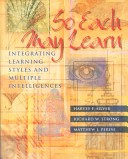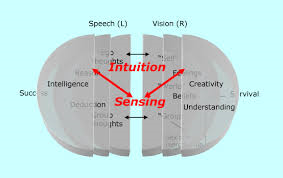Proverbs 9:9 ESVGive instruction to a wise man, and he will be still wiser; teach a righteous man, and he will increase in learning.
This is the last learning style in Jung’s theory of learning styles. This one will wrap up the series and then we can start looking into applying them in the classroom.
The Interpersonal style of learning is the Sensing-Feeling learners and they are the friendly ones! These students are sensitive to people’s feeling and truly want to learn about you and your life. They often take a personal approach to learning and go with what “feels right” to them. They enjoy talking to and about people and find it interesting to learn what they can about people. These are the ones who enjoy biographies and true-to-life stories.
They are the helpers in the classroom and want to be recognized for their efforts. They look for that personal relationship with their teacher as well as their fellow students. They may come to you asking if they can help but many times it is just to engage in a conversation or are just seeking a little attention.
Interpersonal students are the social. They like to work with others, share their ideas and get input from friends. They are cooperative not competitive and they need reassurance that they are doing well at the task they have been given. They will complete tasks more for praise than their own interest in it. They may also think and read out loud even when it is on their own.
They want to know the value of learning and will want to make a connection to their lives and feelings. If a lesson doesn’t connect them to real-life then they may disengage and you will find them talking to a friend.
Here is the next list I took from the book So Each May Learn. I mentioned this in the first post on this subject. I highly recommend it as it has great charts, visuals, and ways to integrate all of this into your classroom.
Sensing-Feeling or Interpersonal Learners
Prefers to learn by:
- Studying about things that directly affect people’s lives rather than impersonal facts
- Receiving personal attention and encouragement from his/her teachers
- Being part of a team-collaborating with other students
- Activities that help him/her learn about his/herself and how he/she feels about things
Learns best from:
- Group experiences and projects
- Loving attention
- Personal expression and personal encounters
- Role playing
Likes:
- Receiving personal attention and encouragement
- Opportunities to be helpful in class
- Personal feedback
- Sharing personal feelings and experiences with others
Dislikes:
- Long periods of working alone silently
- Emphasis on factual detail
- Highly competitive games where someone loses
- Detailed and demanding routines.
One thing to remember, these are NOT “one size fits all” categories. Everyone uses all four styles throughout their life, but may show more strength in one or two of them. Depending on circumstance or context you may see a learning style descriptor which is quite different from their strengths.
A good place to start using these learning styles in the classroom is to differentiate instruction, integrate curriculum, show many ways to problem solve, and provide choices in learning.
Blessings to you,
Tammy











